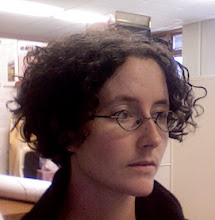I woke up at 5:30 in our slightly seedy La Palma hotel, with bites all over my legs from who knows what. I know there were ants in my bed, hopefully that was it. The room was crowded, nothing but beds with small pathways in between. We packed our luggage at 6 am, one truck full of the things we won't need in Corcovado (sent ahead to Las Cruces), one truck full of heavy things to go in by boat, and then our daypacks with clothes and essentials for the hike in. By 7 we were loaded in the back of two pickup trucks with some boards to sit on. I prefer standing. The drive in to the National Park trailhead took about an hour, up a road that was really just a broad riverbed. Then the 20 km hike in to the Sirena Biological Station, right in the center of the Osa peninsula's coast, between the Sirena and Claro rivers. The hike was fabulous. We didn't have to hurry at all, so I stayed at the very back of the group, botanizing and appreciating the wilderness. The fastest group hiked it in 4 hours; I took 8! The first 3 km were fairly steep uphill. There were a series of big storms shortly before we got there, so that portion of the trail was in rainy-season condition. The soil was saturated, red mud up to my ankles. After that the trail flattened and dried considerably.
Before Corcovado was declared a national park, there were lots of squatters on the land. They had cleared large portions for grazing and agriculture. Everybody was moved out -- voluntarily or not -- in the mid-70's, and the land has mostly returned to forest since then. There are still very visible differences between primary and secondary forest, though. It's biologically very interesting, makes for a diverse flora and fauna (birds and butterflies particularly, I think.) The hike in gave me an appreciation for the level of fragmentation present 30 years ago. It was a thoroughly enjoyable day -- good company, plenty of the Osa Peninsula's famed scarlet macaws.
We wandered in to the Sirena Biological Station shortly before dinner. The station is beautiful, a building expanded from one of the nicer abandoned squatter structures. It is all on stilts, with a main two-story building that has a lab upstairs, nice dining hall, a classroom, and three "bungalows" full of bunk beds. All these buildings are connected into one compound with covered walkways. Electricity comes from solar panels; it's available 24 hrs in the lab (for writing papers) but only a couple of hours (and unpredictably) in other rooms. Makes it easy to go to bed early. :)
The list of dangers here is more exciting than usual. There are poisonous snakes (including the fer de lance), of course, but the bushmasters here are exceptional. They were relatively recently discovered to be an endemic species, and regular bushmaster antivenin doesn't work. Apparently there is a little antivenin in the main hospital in San Jose, but you'd be dead before you made it there. Amputation is your best chance. Oh, and the bushmasters are a bit more aggressive here -- they've been known to chase people. Yay! Good news: they're rare. There are bull sharks in the surf, and at high tide in the rivers. Big crocodiles hang out in the rivers, too. Puma are very common around Sirena, but generally not dangerous. Other than that, just the usual.
Subscribe to:
Post Comments (Atom)

No comments:
Post a Comment